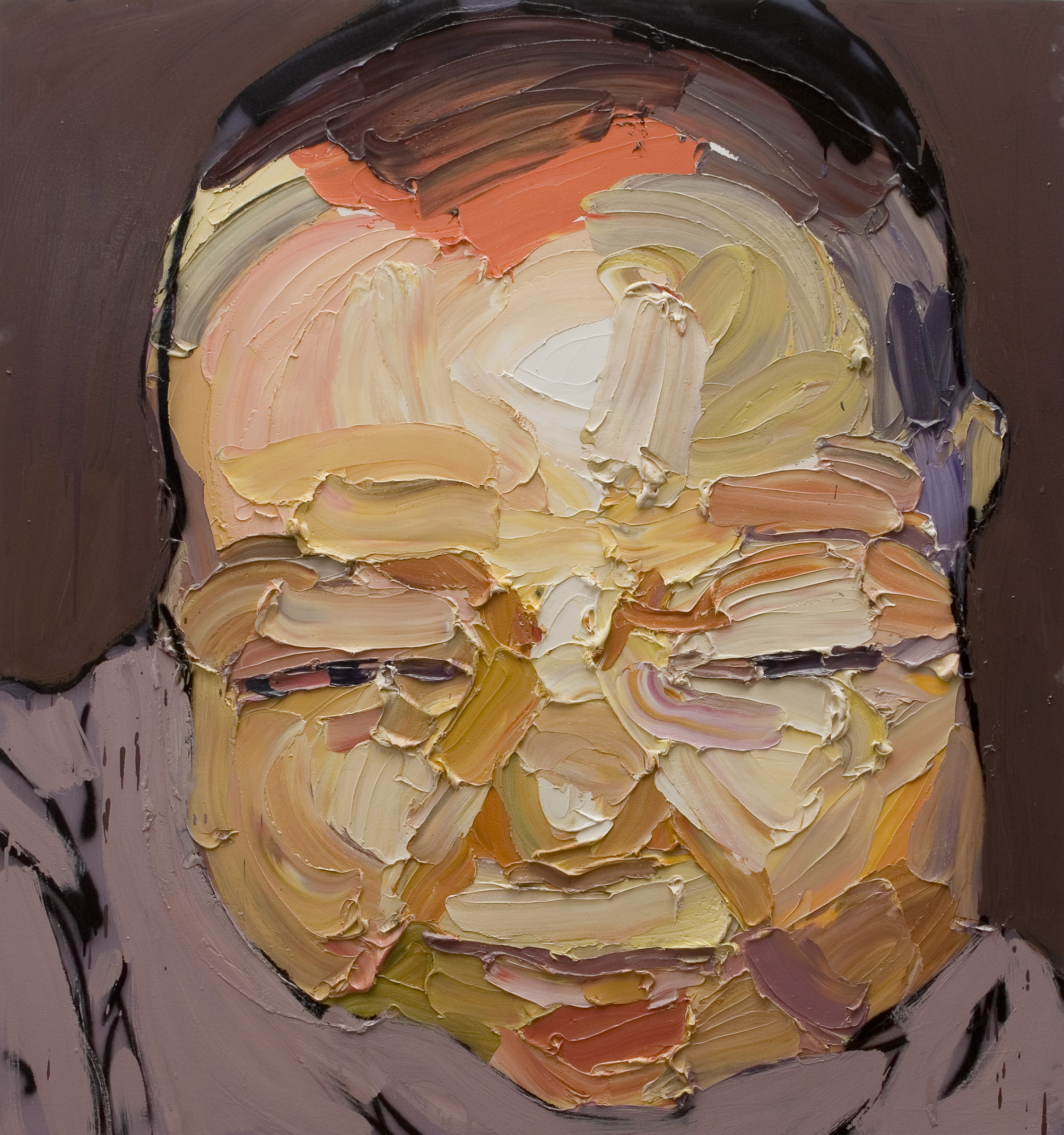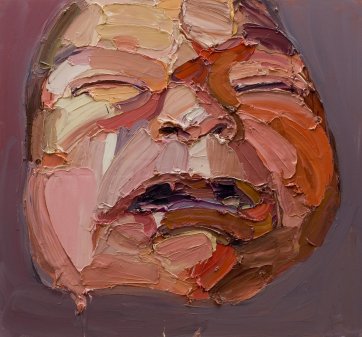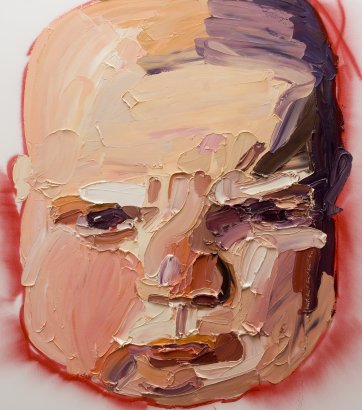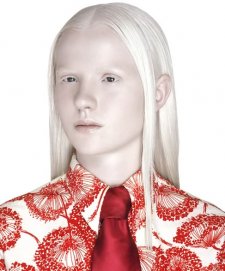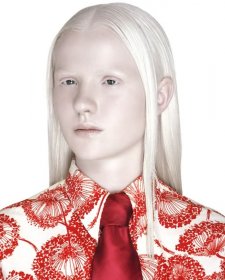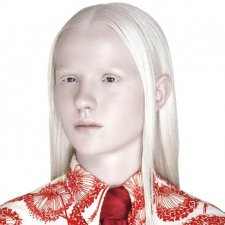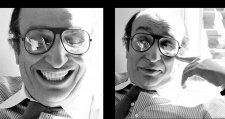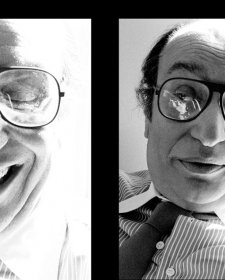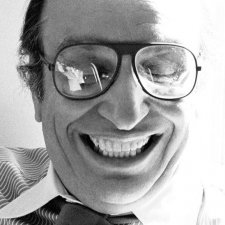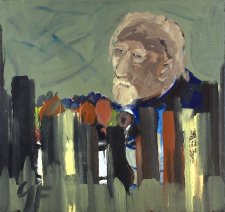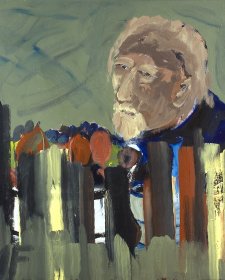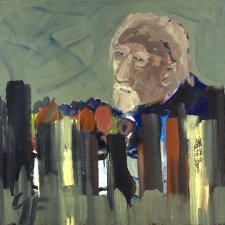Ben Quilty paints relationships. His portraits of baby Joe, Grandpa and the tattooed Whytie are tributes to friends or family. But Quilty also considers technical relationships, specifically the teasing relationship between recognition of the paint medium and of the image. Appreciating paint as a tactile, sensual material and as means of representation, he engineers a balance of paint and portrait.
Quilty applies paint with broad gestural strokes, trowelled on to block out the broad masses of each face. The exuberant paintwork is held in check by contour and tone, which he uses to describe the features of his subjects. His meaty slabs of paint do not disguise the individuality of his sitters, which emerges through characteristic pose, familiar gesture or recognizable feature. Colour is called on to enliven the canvas and to create an emotive impression of character. Red and pink are used to evoke an emotional child, rainbow hues tell of a lively grandfather and simple browns and dark reds and blues slabs suggest the quiet strength of the tattooed man.
The very physicality of the thick paint plays a significant role in the recognition of the painting as an object and, simultaneously, as a building block for constructing likeness. Perception of the image tends to slide in and out of focus, moving between paint and likeness. Quilty negotiates likeness from the resistant materiality of the paint medium and the need for a recognisable image.
